
Ringworm in dogs is a skin infection caused by fungus in the environment. This contagious skin disease can affect dogs, humans, and other animals. Signs of ringworm include scaly, red, itchy skin lesions. Fortunately, most cases respond well to medical treatment and environmental decontamination, which also help prevent the spread of ringworm to people and pets.
Ringworm is a common term for dermatophytosis, a fungal infection of the skin that causes hair loss, redness, and scaly skin. It is a zoonotic disease, meaning that it can be spread between dogs and humans. Despite its name, ringworm is not actually a worm or parasite of any kind. The reason for the name is that the fungus causes a ring-shaped skin lesion that has a worm-like appearance, especially visible on areas of sparse hair coverage.
Ringworm symptoms are limited to the skin and paws of infected dogs and can be uncomfortable. These symptoms are usually recognizable before the infection has become too severe.
In dogs, ringworm lesions typically look like patchy areas of hair loss and scaliness. Lesions typically develop on the dog's head, ears, paws, and limbs, but can occur on any other area of the skin.
Ringworm varies in severity. In some cases, lesions can become red, irritated, and itchy. Ringworm on the paws can cause nails to become brittle and break easily. In mild cases, hair loss may be the only noticeable sign.
Ringworm in humans often presents quite differently, but this depends on the type of fungus and the location of the body. Lesions are usually red, raised, itchy, and sometimes scaly. Most ringworm lesions in humans will have a ring-like appearance.
There are several species of dermatophyte fungi found in the environment. Dermatophytes are often found in soil, surfaces, objects, and on other animals. Animals and humans come into contact with them regularly, but the fungi do not affect healthy skin. However, mildly irritated skin is easily infected by dermatophytes. This includes skin that has been recently shaved, scraped, scratched, or otherwise inflamed. Dogs with sensitive or compromised immune systems are more easily infected with ringworm. Puppies are vulnerable due to their immature immune systems.
Ways dogs might encounter dermatophyte fungi include:
Dermatophytes can also live on bedding, toys, bowls, and other items, so they pass easily among animals in the same home. Fungal spores are fairly hardy in the environment and can survive for several months.
A veterinarian's physical examination is necessary to evaluate the skin and the overall condition of the dog. The vet may use a tool called a Wood's light to look for ringworm lesions. This tool contains ultraviolet light that causes some ringworm lesions to glow neon green when shined on the skin in a dark room. However, some types of lesions will not appear during this exam and further tests may be necessary.
The vet may take a sample of hair and skin to look for dermatophytes under a microscope, or a fungal culture may be necessary. A fungal culture is one of the best ways to definitively diagnose ringworm. This is done by putting a sample on a culture medium and placing it in a dark area in an attempt to grow fungal spores. If growth is seen, the sample is analyzed microscopically to identify the type of fungus. Complicated cases may require a skin biopsy.
Ringworm infections eventually resolve on their own in an immune-competent animal, but treatment can shorten the course of the disease and prevent it from spreading to other humans and other animals. Without treatment and environmental disinfection, ringworm may continue to recur and be passed between members of the home.
Treatment of ringworm may involve the use of prescription oral medication and topical treatments. Mild cases may be only treated topically at first with medicated shampoos or dips. Topical creams or sprays may be used concurrently. Baths or dips are usually recommended twice per week. Creams and sprays are usually applied two or more times a day.
Oral anti-fungal medications are typically used in moderate to severe cases and may need to be administered for six weeks or longer. Potential side effects include nausea, vomiting, diarrhea, and loss of appetite. Follow-up fungal cultures are necessary to determine if the treatment has been successful. It's important to continue medications as recommended until your veterinarian says treatment is complete. Otherwise, the ringworm infection is likely to recur.
Environmental decontamination is an important part of treatment and will reduce the likelihood of recurrence. Ringworm is hardy and can survive in the environment for many months, continuing to reinfect household members. Cleaning will not eliminate every spore, but it can significantly reduce the amount in the environment.
The home should be cleaned and vacuumed thoroughly several times per week, then disinfected. Disinfection should be done with bleach wherever possible. Clean toys and bowls with soap and water, then disinfect with a diluted bleach solution. Steam cleaning can disinfect carpets, rugs, and upholstery. Wash bedding and other materials with bleach as well.
Dogs with ringworm should be confined to one room of the house during treatment. Other pets should not have access to this room. The room should be cleaned twice a week during treatment, then thoroughly disinfected after recovery.
Ringworm responds well to rigorous, persistent treatment, allowing dogs to return to full health. The trouble with ringworm is how hardy and contagious it is, meaning it can continue to reinfect your dog or other members of your household in a vicious, itchy cycle that requires vigilant attention to break.
There's no way to fully prevent your dog's exposure to ringworm because it naturally occurs throughout the environment. However, you can reduce your dog's risk of ringworm infection through good hygiene and common sense. Take good care of your dog's skin and overall health. Groom your dog regularly. Visit the vet for routine wellness check-ups as recommended. Keep your dog's bedding and toys clean and dry; wash beds regularly, and replace or clean toys as needed. Clean your home regularly, making sure to vacuum, mop, and wipe down your dog's areas in the process. Don't allow dogs with skin conditions or open wounds to play outside. Contact your vet for treatment of skin irritations as soon as possible.
Ringworm is very contagious and can easily be passed back and forth between household members of all species. Medical attention is necessary to prevent continued transmission. Contact your veterinarian if your pet has signs of ringworm.
Ringworm is contagious and can easily spread to human skin, especially in areas where the skin is scratched or abraded. Contact a physician if any humans in your home are affected because all members of the household will require treatment to stop transmission and facilitate healing.

What to Do if Your Cat Is Snoring
Cat snoring can happen for several reasons. Find out if your cat's snoring is normal or caused by a medical issue. Know when to call the vet about your cat snoring.
Turkish Angora: Cat Breed Profile, Characteristics & Care
The elegant and silky Turkish Angora cat is a playful, affectionate, and sometimes mischievous pet. Learn about the Turkish Angora breed.
Toyger: Cat Breed Profile, Characteristics & Care
The toyger (toy tiger) cat is a beautiful, rare breed with an easygoing demeanor. These cats are hard to come by but make excellent pets.
Donskoy: Cat Breed Profile, Characteristics & Care
Donsky cat, or Don Sphynx, is a hairless cat that's known for being affectionate, social, and remarkably intelligent. Learn more about the Donsky cat breed.
Japanese Bobtail: Cat Breed Profile, Characteristics & Care
The Japanese bobtail is recognized for its bunny-like tail and is loved for its friendly, playful personality. Learn about the Japanese bobtail breed.
How to Stop Cat Aggression After a Vet Visit
Cats are usually out of sorts and ornery after a trip to the veterinarian. Learn how to stop cat aggression by planning ahead with these tips.
Why Do Cats Like High Places?
Does your cat like to hang out on top of tall furniture? Here's why cats like high places.
Rectal Prolapse in Dogs
Rectal prolapse in a dog can be an alarming thing to see. Find out why this happens, how to prevent it, and how to heal dog prolapse at home.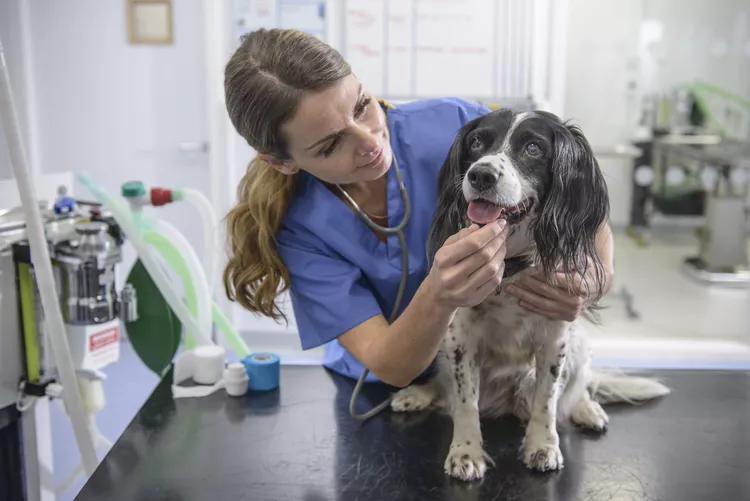
Is Acetaminophen Safe for Dogs?
Acetaminophen is used by humans for pain and fever relief, but is it safe for dogs? Here's what you need to know before giving your dog acetaminophen.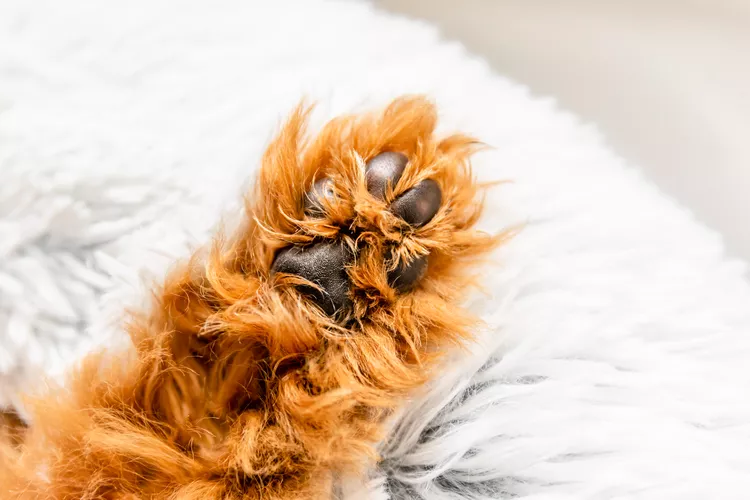
Dog Broken Toe: Signs and Treatment
Dogs can break their toes for several reasons. Find out how to tell if your dog has a broken toe. Learn what you need to do and what restrictions your dog may have to let a broken toe heal.
Tetanus in Dogs
Tetanus is an infection caused by bacteria found in soil. It can cause severe symptoms in dogs and even lead to death if not treated promptly.
Swedish Vallhund: Dog Breed Characteristics & Care
The Swedish vallhund makes for a high-energy and affectionate companion. Learn about the breed's history, health, exercise needs, and more.
Afghan Hound: Dog Breed Characteristics & Care
The Afghan hound is a majestic dog breed, known for its luxurious long coat and sweet personality. Learn about cost, care, and training needs.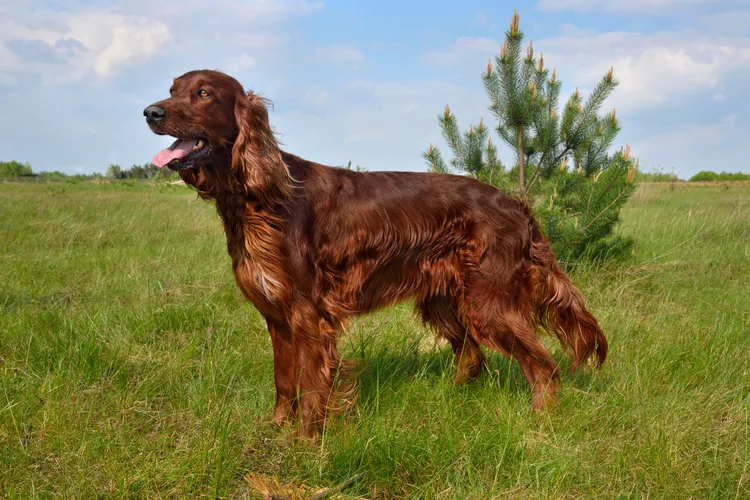
Irish Setter (Red Setter): Dog Breed Characteristics & Care
The Irish setter, also known as the red setter, stands out from the crowd with their striking red coat and athletic nature. Learn about this gentle and affectionate dog breed.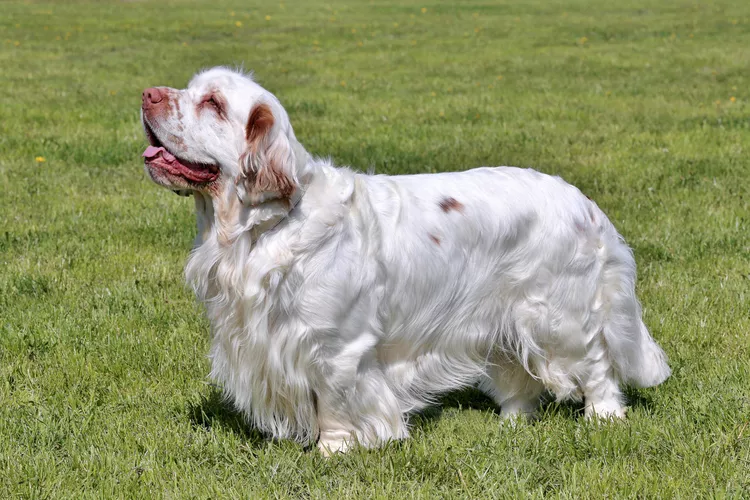
Clumber Spaniel: Dog Breed Characteristics & Care
The Clumber spaniel is a friendly, calm dog and a great family pet who gets along with kids. Just beware of this rare breed's shedding and drool.
Reasons Why Dogs Grind Their Teeth
Some dogs grind their teeth. Learn why dogs grind their teeth and if it can be harmful. Find out what to do about teeth grinding in dogs.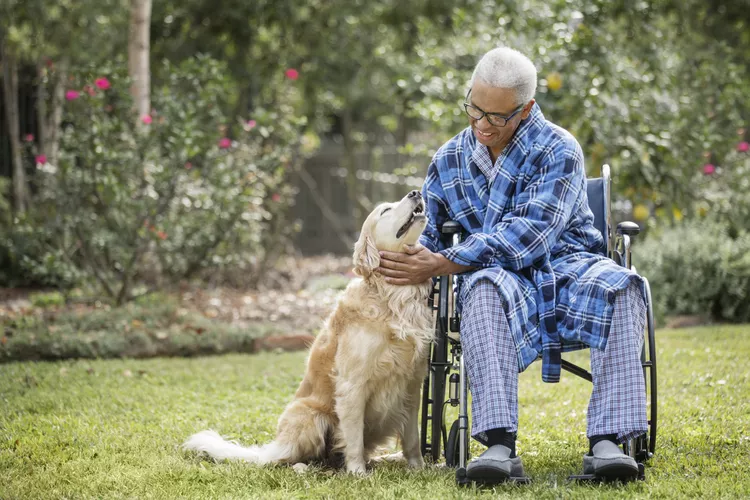
Therapy Dog Certification: A Complete Guide in 6 Steps
Could your dog be trained to serve as a therapy dog? Here's how you and your dog can become an official animal-assisted therapy team.
Here’s How to Stop Your Dog from Jumping on You When Excited
Although it can be cute the first few times your dog jumps on you, it can quickly turn into a bad habit, especially if your pooch starts jumping on strangers. Here’s how to stop your dog from jumping on you when excited.
Why Do Dogs Howl at Sirens?
Howling at sirens is something that dogs are well known for, but why do some dogs do it while others seem unbothered?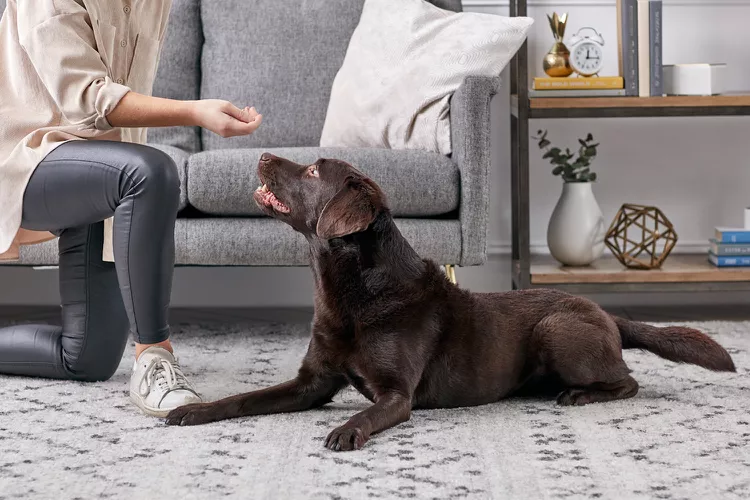
How to Train a Labrador Retriever
Proper training is an essential part of owning a Labrador retriever. These smart dogs can be trained to be service dogs, hunters, and excellent companions.